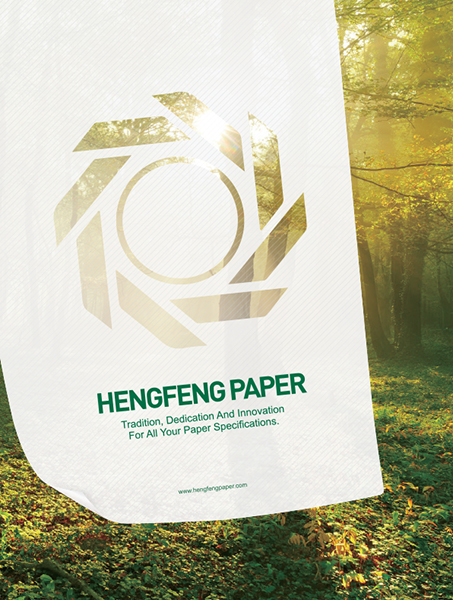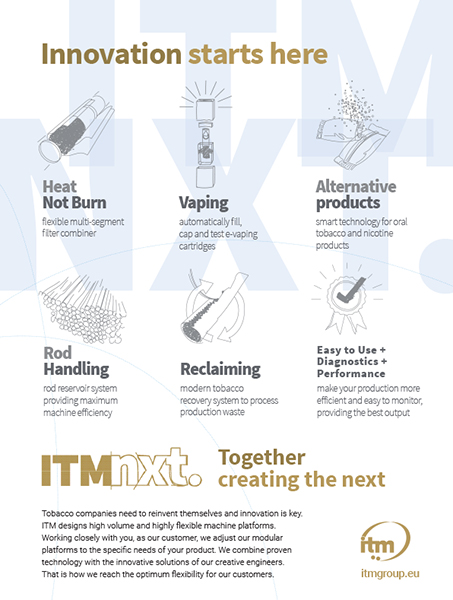
Fine-cut tobacco will offer hard-up smokers a legal alternative—if tax officials can keep their ambitions in check.
By Stefanie Rossel
The continuous decline in tobacco consumption over the past years has not only impacted sales of factory-made cigarettes (FMC) but also left its mark on the hand-rolling tobacco market. Global fine-cut tobacco retail value stood at $23.73 billion in 2019, down from $24.11 billion in 2018, according to Euromonitor International.
With a consumption of 24,298 tons in 2019, Germany remained by far the largest market, with stable sales over the past decade. “In Germany, fine-cut tobacco has an important buffer function between FMC and illicit cigarettes,” says Michael von Foerster, managing director of Germany’s smoking tobacco association Verband der Deutschen Rauchtabakindustrie. “It’s a real alternative for all those who want to enjoy tobacco but can’t afford or don’t want to buy expensive cigarettes.”
In terms of rolling tobacco sales, Germany was followed by France, with 7,620 tons, and Poland, with 6,590 tons. Fine-cut tobacco was also popular in the U.K. (6,346 tons) and Belgium (6,098 tons). Across the European Union (EU), fine-cut consumption stood at 80,663 tons in 2019, down from 82,044 tons the previous year.
“In general, one can say that the fine-cut market is now stable whilst still being characterized as very diverse across the EU,” explains Peter van der Mark, secretary general of the European Smoking Tobacco Association (ESTA). “It is difficult to talk of a ‘European’ market for fine-cut tobacco as this product is not spread homogeneously across the union. In most countries, fine-cut tobacco is still a niche product whilst it can also be a long-established traditional product with a sizeable market share in other countries.”
After the financial crisis of 2008, the fine-cut market in Europe grew substantially until the crisis subsided. “Since 2014, with the general economic recovery, the fine-cut market stabilized and then declined over several years and is stable again,” says Van der Mark. “In 2014, requirements of the EU’s revised Tobacco products Directive (TPD2) entered into force and became mandatory in 2016. The impact on tobacco companies in the EU, and especially on smaller and mid-sized companies, has been significant. The costs of the legislative requirements, including those for track-and-trace, lead to several companies closing down, the shifting of manufacturing plants and other companies being sold. In the end, the TPD2 is driving further market consolidation. Fine-cut taxation has been increased with the minimum requirements of the excise directive, with the last minimum increase in January 2020. In some member states, fine-cut taxation was increased significantly, and tax levels sometimes reached the ones for cigarettes. This led to an increase in illicit trade.”

Impact on exports
According to Van der Mark, the track-and-trace system for fine-cut tobacco products, which manufacturers, importers and distributors had to implement in record time, presented a challenge to the sector. By May 20, 2019, the transition period for both cigarettes and fine-cut tobacco ended. Intended to combat illicit cigarette trade, the EU track-and-trace system requires that each tobacco package carries a unique identifier (UI) code that must be scanned and recorded at every step of the distribution chain and transmitted to both the manufacturer’s database and the EU database, allowing authorities to trace and authenticate tobacco products. This required an entirely new level of data transfer technology as well as a highly developed IT infrastructure and updated packaging machinery. The system involves around 720 million scans a day across the EU, ESTA reports on its website.
Van der Mark fears the track-and-trace system will impede European manufacturers’ ability to export their rolling-tobacco products. “The system, as provided for in the European Tobacco Products Directive, was meant for products placed on the European market—as common sense dictates—but this obligation was later extended through the implementing regulation to export products when manufactured in Europe,” he says.
“As a result, the European tracking and tracing system can introduce a de facto export ban if products are destined to a jurisdiction where regulations are incompatible with the track-and-trace code either due to packaging or labeling regulation or due to incompatibility of the EU code with the code used in the destination country. Fine-cut tobacco, being predominantly manufactured in Europe, often by smaller and mid-sized companies, has as a result already been significantly and disproportionally impacted and disadvantaged,” says Van der Mark.
Getting taxation right

Taxation has always played an important role in the fine-cut tobacco sector. The EU requires member states to levy a minimum rate of excise duties on cigarettes, which means that a pack of twenty FMC with a retail selling price, excluding taxes, of €0.70 ($0.79) would end up having a retail price, including all taxes, of €3. For fine-cut tobacco, the minimum excise rate stands at 48 percent of the weighted average retail selling price, or €60 per kg, which is significantly lower.
“The directive underlines the objective of ‘convergence’ and ‘approximation,’” says Van der Mark. “This also means that tax levels must cater to the differences that exist between the product categories. Fine-cut tobacco, for example, is a nonfinished product that requires consumers to make additional purchases, its consumers have different characteristics than cigarette consumers and production of fine-cut tobacco involves a higher share of smaller and mid-sized companies.
“For these reasons, fine-cut tobacco has a lower tax-bearing capacity than cigarettes, which is well reflected in the tobacco excise directive, which set the minimum rate for fine-cut tobacco at two-thirds of the minimum level for cigarettes. This tax differential is also key in curbing illicit trade as it allows fine-cut tobacco to fulfill its ‘buffer function’ by capturing price-out cigarette consumers that would have otherwise sought cheaper alternatives, including nonduty paid products. This, also, was well understood by many member states. In general, member states have implemented these new minimum rates in 2020, but this required for some of them significant step increases that put unnecessary pressure on the fine-cut tobacco market,” says Van der Mark.
“Price differences between individual EU member states increase the incentive for cross-border shopping or even contraband,” confirms Von Foerster. “That’s why a sensible tax harmonization within the EU makes sense. The continuously high revenues from tobacco tax in Germany in parallel with the steady decline in cigarette consumption show that a balanced tax policy with moderate tax hikes and balanced product categories works.”
Potential opportunity
With the Covid-19 pandemic that has paralyzed the global economy for almost six months now, consumers will likely have less income at their disposal in the coming months or even years—a situation that typically results in downtrading within the tobacco category. Past experiences, such as the financial crisis of 2008, suggest that consumption of fine-cut tobacco and associated government revenues will grow this time too.
“When consumers’ disposable income is under pressure, consumers are looking for more affordable alternatives, and downtrading to fine-cut tobacco is the legal option,” says Van der Mark. “This, however, requires one condition to be met: that a country’s tax policy allows fine-cut tobacco to be that cheaper alternative. In several countries, taxation on fine-cut tobacco was aligned with that of cigarettes in the last few years as governments were looking at increasing revenues. In those cases, consumers’ available alternatives were found on the black market, which produces no revenues at all. Authorities, therefore, need to understand that market mechanism to develop the right tax policy.”
Von Foerster expects the German government to stick to its strategy of moderate tobacco tax hikes, even as it needs to fund multi-billion-euro economic aid programs. “The amendment of the European tobacco excise directive was only just started,” he says. “The amended version is expected to be released in one-and-a-half years. It is unlikely that Germany will change its tobacco taxation legislation during that period. Furthermore, negative examples, such as Greece or France, show that a thoughtless significant tobacco tax hike will not lead to the desired additional revenue—on the contrary, it will lead to a massive plummeting of revenues. Interestingly, this is true for all taxes. It is high time politicians learned from this experience.”
Van der Mark notes that the EU tax directive sets only minimum rates, and many member states, including France, Ireland and the U.K., have implemented far higher taxes, resulting in high levels of illicit trade and nondomestic-duty-paid consumption.
“It would not be surprising if several member states indeed seek to increase their revenues from tobacco sales, thinking demand for tobacco in general is relatively inelastic,” he says. “They, however, should pay due attention to the fact that the demand for legal products is much more elastic. If member states increase taxes without ensuring that consumers can still find cheaper and legal alternatives, consumption may then shift to illicit products, and state coffers will not see the rise in tax receipts that were expected.”

















